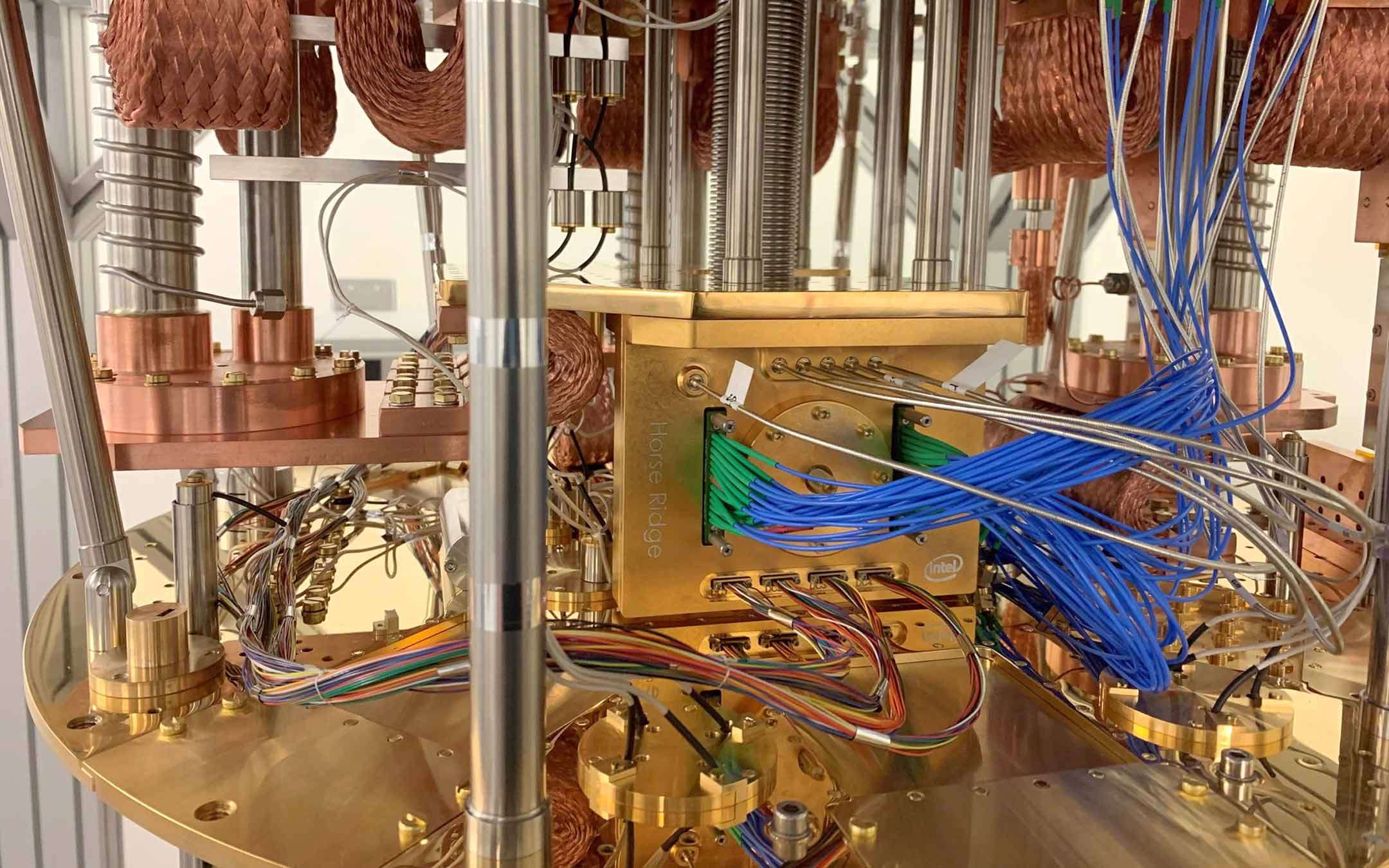
Intel Horse Ridge II, cryogenic quantum control
In the frame of the Labs Day appointment, the announcement of Horse Ridge II, Intel's chip for cryogenic quantum control, successor to the one presented in February. According to the company, this is an important step forward in overcoming the limitations of large-scale use of quantum computing.
The need for multiple racks of equipment and thousands of cables entering and exiting the chiller by leveraging an SoC has already been greatly simplified with the first Horse Ridge (System-on-Chip) highly integrated. Horse Ridge II employs the qubit drive capable of generating radio frequency pulses to manipulate the state of the qubit. This is the comment by Jim Clarke, Intel's Director of Quantum Hardware.
With Horse Ridge II, Intel continues to lead innovation in the field of cryogenic quantum controls, thanks to our in-depth interdisciplinary expertise between the IC design team, the Labs and the technology development team. We believe that increasing the number of qubits without taking into account the resulting wiring complexities is comparable to having a racing car and always being jammed in traffic.
Horse Ridge II is implemented using FinFET technology at 22 nm low power consumption with proven operation at a temperature of 4 kelvins while today a quantum computer operates in the millikelvin range, only a fraction of a degree above absolute zero. The addition of a programmable microcontroller in the integrated circuit allows for higher levels of flexibility and sophisticated controls through digital signal processing techniques to perform additional filters on the pulses, helping to reduce crosstalk between qubits. Clarke continues.
Horse Ridge II makes controlling quantum circuits even more agile and we expect this further advancement to bring greater fidelity and lower power consumption, taking us another step towards the development of an integrated circuit "traffic-free" quantum.
These are the two new functions implemented that pave the way for further integration into the SoC of external electronic controls operating inside the cryogenic chiller:
Reading of qubit: guarantees the ability to read the current status of the qubit allowing to detect its status on a low latency chip without storing large amounts of data, thus saving memory and energy; Multigate pulsing: simultaneous control of the potential of many qubit gates for effective readings, correlation (entanglement) of qubits and operation of multiple qubits paving the way for scalability. The next appointment with Intel news on this front is set for February 2021 when the ISSCC (International Solid-State Circuits Conference) event will be staged.
Source: Intel
Intel presents the Horse Ridge II chip at Labs Day
Based on the innovations already introduced, the component supports enhanced capabilities and higher levels of integration for advanced control of the quantum system. A novelty defined as important since current quantum systems use room temperature electronics with many coaxial cables directed towards the qubit chip inside a dilution chiller, an approach not suitable for handling a large number of qubits due to the size, cost, of energy consumption and thermal load of the chiller.The need for multiple racks of equipment and thousands of cables entering and exiting the chiller by leveraging an SoC has already been greatly simplified with the first Horse Ridge (System-on-Chip) highly integrated. Horse Ridge II employs the qubit drive capable of generating radio frequency pulses to manipulate the state of the qubit. This is the comment by Jim Clarke, Intel's Director of Quantum Hardware.
With Horse Ridge II, Intel continues to lead innovation in the field of cryogenic quantum controls, thanks to our in-depth interdisciplinary expertise between the IC design team, the Labs and the technology development team. We believe that increasing the number of qubits without taking into account the resulting wiring complexities is comparable to having a racing car and always being jammed in traffic.
Horse Ridge II is implemented using FinFET technology at 22 nm low power consumption with proven operation at a temperature of 4 kelvins while today a quantum computer operates in the millikelvin range, only a fraction of a degree above absolute zero. The addition of a programmable microcontroller in the integrated circuit allows for higher levels of flexibility and sophisticated controls through digital signal processing techniques to perform additional filters on the pulses, helping to reduce crosstalk between qubits. Clarke continues.
Horse Ridge II makes controlling quantum circuits even more agile and we expect this further advancement to bring greater fidelity and lower power consumption, taking us another step towards the development of an integrated circuit "traffic-free" quantum.
These are the two new functions implemented that pave the way for further integration into the SoC of external electronic controls operating inside the cryogenic chiller:
Reading of qubit: guarantees the ability to read the current status of the qubit allowing to detect its status on a low latency chip without storing large amounts of data, thus saving memory and energy; Multigate pulsing: simultaneous control of the potential of many qubit gates for effective readings, correlation (entanglement) of qubits and operation of multiple qubits paving the way for scalability. The next appointment with Intel news on this front is set for February 2021 when the ISSCC (International Solid-State Circuits Conference) event will be staged.
Source: Intel